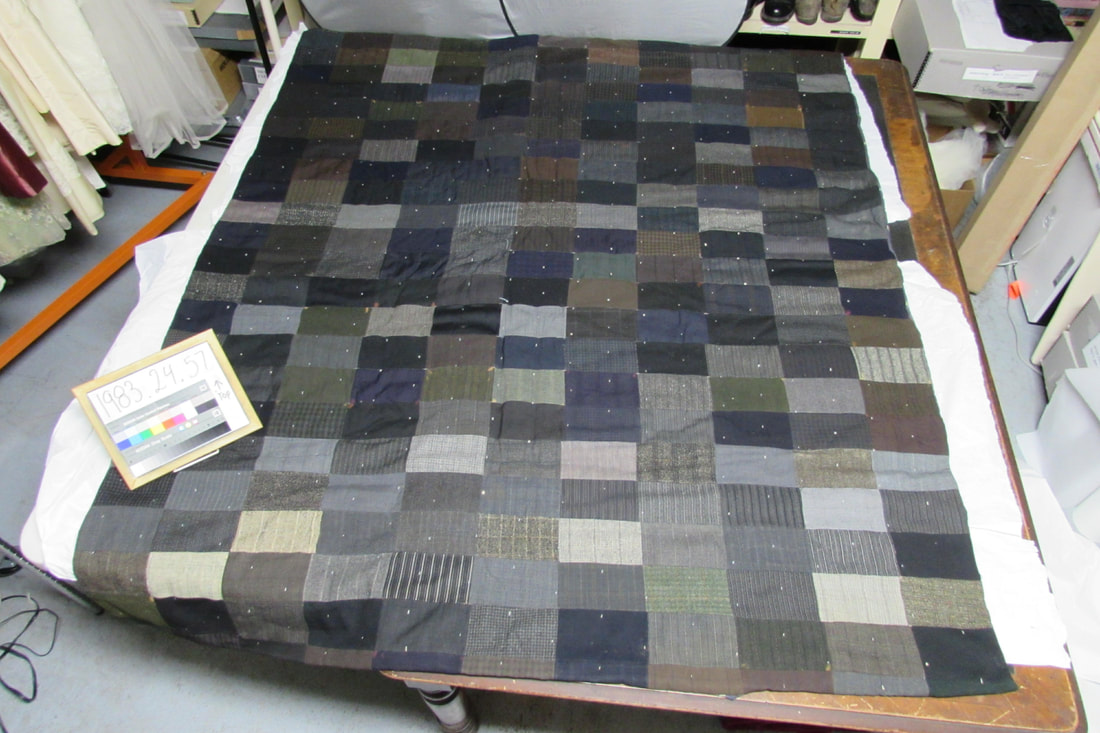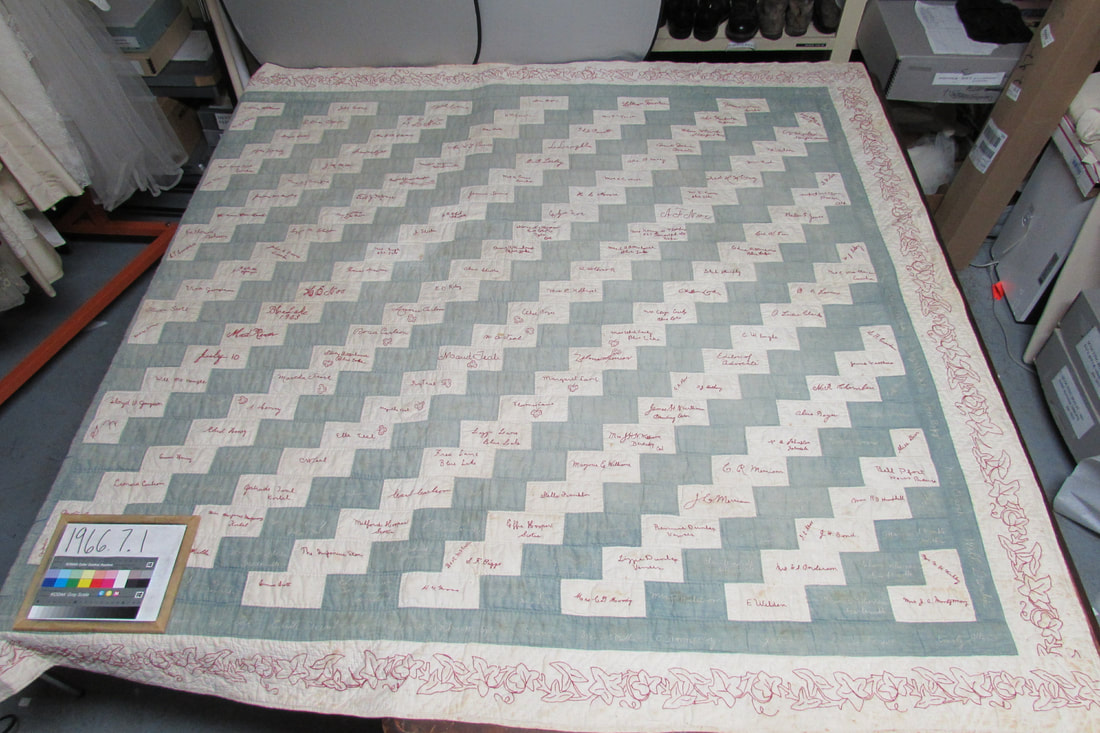“A museum has to renew its collection to be alive, but that does not mean we give on important old works.” -David Rockefeller
| We have quilts from other communities, such as an unfinished crazy quilt top that was started to eventually be auctioned off to raise money for a local fraternal organization, but for some reason was never finished, and a quilt featuring embroidered signatures of community members from Blue Lake, Eureka, Garberville, Berkeley, Korbel, Arcata, and more that was thought to have been auctioned off to raise money for the establishment of a new Order of the Good Templars group in Blue Lake. More often than not, the makers of these quilts are unknown or unnamed. It’s a mystery, but you can still learn a lot about the women who made the quilts, and the period that the quilts were made in, even if you don’t know their names or their stories. |



 RSS Feed
RSS Feed